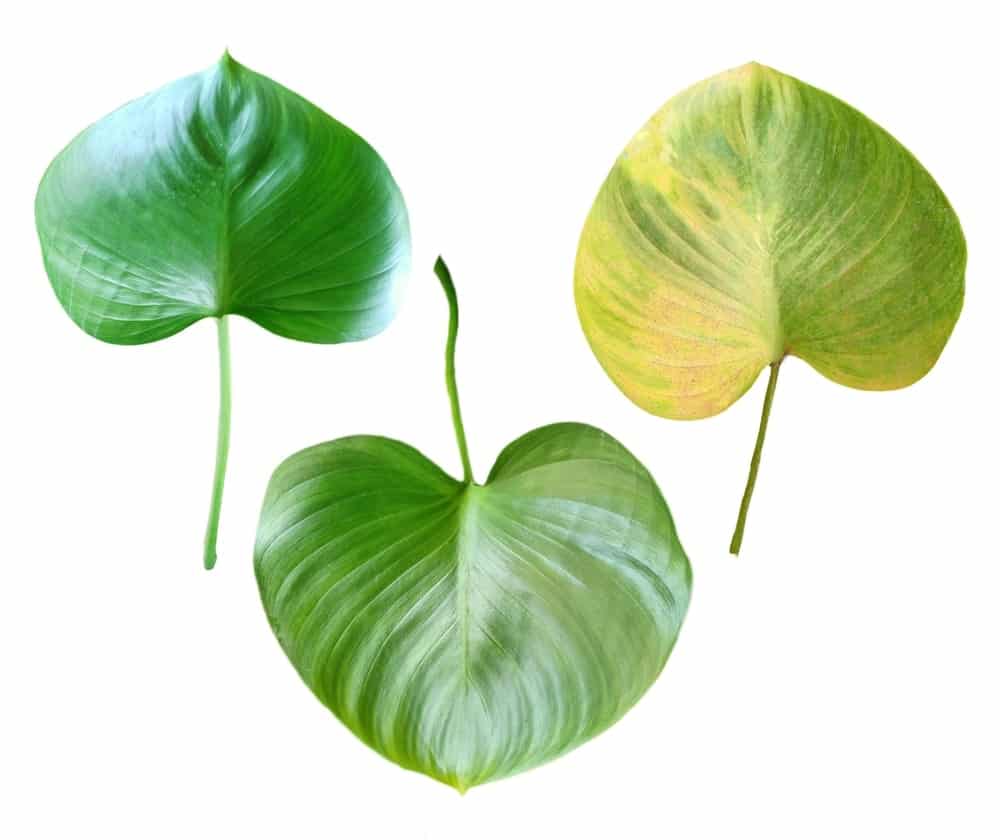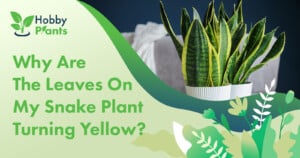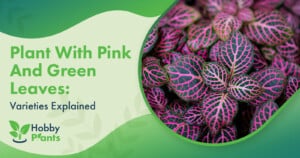The Homalomena is a genus of plant that make excellent houseplants. The most common type of homalomena to be kept in the home is the Homolomena Emerald Gem.
These plants are known for being very low maintenance, and often boasting a strong anise smell. However, if the leaves of your homalomena begin to turn yellow, it can indicate a problem that needs to be addressed.
The Homalomena
The Homalomena plant is mostly native to South America and Asia, but many species of it are found all over different regions. It is becoming a more and more popular houseplant due to the appeal of its vibrant green color, strong anise smell, and low maintenance. The homalomena grows best in bright, indirect light, and does not require much water.
The leaves of the homalomena are thick and green, and they grown in a spade shape with deep ridges. The homalomena itself has a very similar look to a hosta plant, but unlike the hosta, it does very well indoors. It is great for small homes, or compact locations, as it doesn’t grow to be very tall. However, be careful putting your homalomena in a house with pets, as it is toxic to both animals and humans if ingested.
Why Homalomena Plants gets Yellow Leaves
The plant can suffer from several conditions that yellow and/or curl the leaves.
1. Natural Yellowing
Some yellowing in the lower leaves of your homalomena plants is completely natural! As new growth appears older leaves will yellow and die. Try not to panic at the first sign of yellow leaves, as it can be natural. However, if this natural yellowing is happening too often or too quickly, it could be sign that the soil is too wet, too dry, or that your plant is too cold.
2. Moisture
In most houseplants, the most common cause of yellowing leaves is incorrect moisture level. Be careful of overwatering your homalomena! Homalomena does not need much water, but can also suffer from dehydration if it is not watered enough. It’s also important to maintain consistency when watering, as going from very dry soil to very wet soil will cause the plant stress. And when you do water your Homalomena, make sure that the water is draining correctly, and that you do not let water sit in the bottom of the pot, as this can cause root rot.
3. Temperature
Homalomena is very sensitive to low temperatures, especially temperatures below 65 degrees Fahrenheit. Being kept in too cold of an environment could be causing the leaves on your homalomena to yellow. Ideally, keep homalomena in temperatures between 65 and 85 degrees Fahrenheit.
4. Humidity
Homalomena will usually do well with average household humidity, but if you live in a dry area or it is unusually dry in your home, your homalomena may need a little extra humidity.
5. Pests
Pests such as Scale, Mealybugs, and Spidermites are common problems for indoor plants, including the Money Tree. Spidermites are sap suckling pests, and are often responsible for draining moisture from houseplants. A Money Tree that is weakened by overwatering, poor light, or conditions that are not ideal will be more susceptible to pests, as it will be more difficult for the plant to fight them off. Pests should be eradicated quickly, because if the issue is left unchecked, they may spread further into the plant, and even onto other houseplants.

Treatments
Natural Yellowing
- Natural yellowing, as it is natural, does not typically need to be treated.
- However, if the natural yellowing is happening too quickly or too often, there may be another issue.
- If the yellow leaves bother you, you can remove them by clipping at an angle with sharp garden shears.
Moisture
- Homolomena does not need excessive water, so it’s best to only water it when 50% of the soil is dry.
- Make sure that your pot is draining correctly. If not, you may need to repot.
- Don’t let water sit in the bottom of the pot or drainage pan, as this can cause root rot.
Temperature
- It’s best to keep your homalomena in temperatures above 70 degrees Fahrenheit.
- Make sure there are no drafts, as this could cause your plants leaves to yellow.
- Move your plant to an area of the house that is warmer if the temperature is not ideal.
Humidity
- If your house is not particularly humid, your homalomena may be too dry.
- Try a regular misting, humidifier, or pebble tray to fix this issue.
Pests
- If your homalomena is infested with spider mites, try cleaning with a solution of 1 part alcohol to 1 part water. If your plant is already weakened from other issues, adjust the solution to be 1 part alcohol to 3 parts water. A dish soap and water solution may also work. In this case, combine 1 teaspoon of dish soap with 1 liter of water. Either spray this on the infected plant using a spray bottle, or wash the plant with a cloth or sponge.
- Prevent spider mites on your plants by inspecting often, so that you may act at the first sign of infestation. Plants that have taken too much damage from pests may not recover, and it is better to dispose of them, rather than risk them spreading pests to the rest of your houseplants.
How Take Care of the Yellow Leaves
To remove yellow leaves from your homalomena, make angled cuts just below the yellow area. If the yellow leaves turn brown, cut foliage back even more, even all the way to the soil.
More like this: Yellow Sansevieria Leaves – Reasons
Conclusion
Homalomena is a very resilient and low maintenance plant, good for beginning indoor gardeners and small spaces. Be wary of letting pets near it, as it is toxic when ingested. The strong anise smell of the leaves helps it battle bad odors in the home. If the leaves are turning yellow, it could be caused naturally. However, it could also be caused by overwatering, pests, low humidity, or low temperatures.
As long as you check frequently for pests, maintain warm temperatures, are careful not to overwater, and provide a humid environment, your homalomena plant should be just fine.
Similar post:
- Yellow Dracaena Leaves – Reasons & Treatments
- Yellow Alocasia Polly Plant Leaves – Reasons & Treatment
Victoria is the owner and main author of hobby plants. She loves spending her free time in her garden planting and taking care of her plants. Victoria hopes you enjoy the content here!
![Why Are My Orchid Leaves Turning Yellow? [Find Out Here] Why Are My Orchid Leaves Turning Yellow? [Find Out Here]](https://www.hobbyplants.com/wp-content/uploads/2022/07/orchid-leaves-turning-yellow-300x158.jpg)

![Why Is My Bamboo Plant Turning Yellow? [Find Out Here] Why Is My Bamboo Plant Turning Yellow? [Find Out Here]](https://www.hobbyplants.com/wp-content/uploads/2022/07/why-is-my-bamboo-turning-yellow-300x158.jpg)
![Why Is My Fiddle Leaf Fig Dropping Leaves? [ANSWERED] Why Is My Fiddle Leaf Fig Dropping Leaves? [ANSWERED]](https://www.hobbyplants.com/wp-content/uploads/2022/06/why-is-my-fiddle-leaf-fig-dropping-leaves-300x158.jpg)
![Why Are My Bird of Paradise Leaves Curling? [FIND OUT HERE] Why Are My Bird of Paradise Leaves Curling? [FIND OUT HERE]](https://www.hobbyplants.com/wp-content/uploads/2022/07/bird-of-paradise-leaves-curling-300x158.jpg)
![Why Are My Peace Lily Leaves Turning Brown? [EXPLAINED] Why Are My Peace Lily Leaves Turning Brown? [EXPLAINED]](https://www.hobbyplants.com/wp-content/uploads/2022/07/peace-lily-leaves-turning-brown-1-300x158.jpg)
